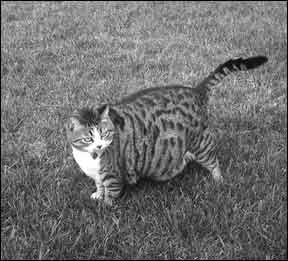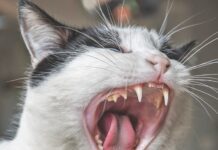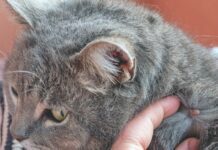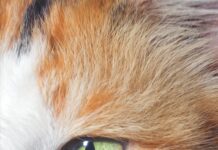Obesity is a big problem for our beloved feline friends. Many serious health problems can result, such as arthritis, liver disease, heart failure and renal disease. And don’t think you’re the only one living with a fat cat.


288
“There is no question that feline obesity is the number-one nutrition-related disorder in cats today,” Francis Kallfelz, DVM, the emeritus James Law Professor of Medicine (Nutrition) at Cornell University’s College of Veterinary Medicine,.” It is estimated, he notes, that 40 percent of all cats in the U.S. are either overweight or obese.
Revealing Signs. In most cases, he notes, you don’t need this scale in order to determine that your cat is overweight. “You can tell by simply looking at the animal,” says Dr. Kallfelz, who is board-certified by the American College of Veterinary Nutrition. “When you look at a cat of normal weight from above or from the side, you’ll see a narrowing, or tuck, behind its rib cage. When that tuck disappears and the cat seems to be developing a pot belly, that’s an indication that it is overweight or obese.” Other clear indications of obesity, he adds, include the accumulation of fat over the hips and rear end, and a reluctance to engage in strenuous activity.
A Delicate Balance. The chief cause of feline obesity, says Dr. Kallfelz, involves “simply an equation of caloric intake versus caloric expenditure. There should be a direct balance of intake and expenditure in this regard. When a cat consumes more than it expends, it will gain weight.” A diet that is high in carbohydrates is especially likely to cause weight gain, he notes, since cats are naturally equipped to eat and digest prey that is constituted mostly of water, protein and fat, but not much carbohydrate. “So, just like humans,” he says, “a cat that consumes a diet that is overly rich in carbohydrates will store them as fat.”
In addition to inhibiting a cat’s normal penchant for physical activity, seriously compromising its quality of life and probably shortening its life span, obesity can exacerbate several disorders. Among the conditions include osteoarthritis and hip dysplasia. The most effective therapeutic approach to treating hip dysplasia is a weight control program that starts early in an affected cat’s life, the purpose of which is to take as much pressure as possible off the animal’s limbs.
Feline obesity is also strongly associated with diabetes mellitus, a disease caused by insufficient production of or response to the hormone insulin, which is essential to the regulation of blood sugar. In addition, obesity has been linked to hepatic lipidosis, a very serious and potentially lethal liver disease.
Cardiovascular health can also be impaired by obesity, he notes. “Certainly,” he says, “an extra burden is placed on a cat’s heart and vascular system when they have to move blood through all of this excess tissue.”
The Right Stuff. Given these risks, says Dr. Kallfelz, it stands to reason that a cat’s life span may be substantially extended and its quality of life significantly improved if its owner carefully manages — and appropriately restricts — the animal’s caloric intake. However, he advises, a weight-loss program should not be undertaken without the consultation of a veterinarian, since many signs of obesity may be caused by physical abnormalities or diseases that require specific treatment.
If no underlying disease is discovered, the veterinarian is likely to recommend a weight-reduction program comprising two elements: a decrease in the cat’s daily caloric intake and an at-home exercise program geared to help the animal burn more calories each day than it consumes.
Regarding the feline diet in general, Dr. Kallfelz offers the following advice: “Make sure you’re feeding a food that’s guaranteed to be complete and balanced for the life stage of your cat, and make sure you’re feeding your animal the proper amount. You can find a nutritional guarantee on the label of virtually every cat food on the market today. And make sure that you don’t overfeed the animal. Watch its weight. An adult cat at maintenance weight should be neither losing nor gaining. As long as the label carries the appropriate life-stage guarantee and is a properly formulated diet, it shouldn’t make any difference whether it’s wet or dry food.”



